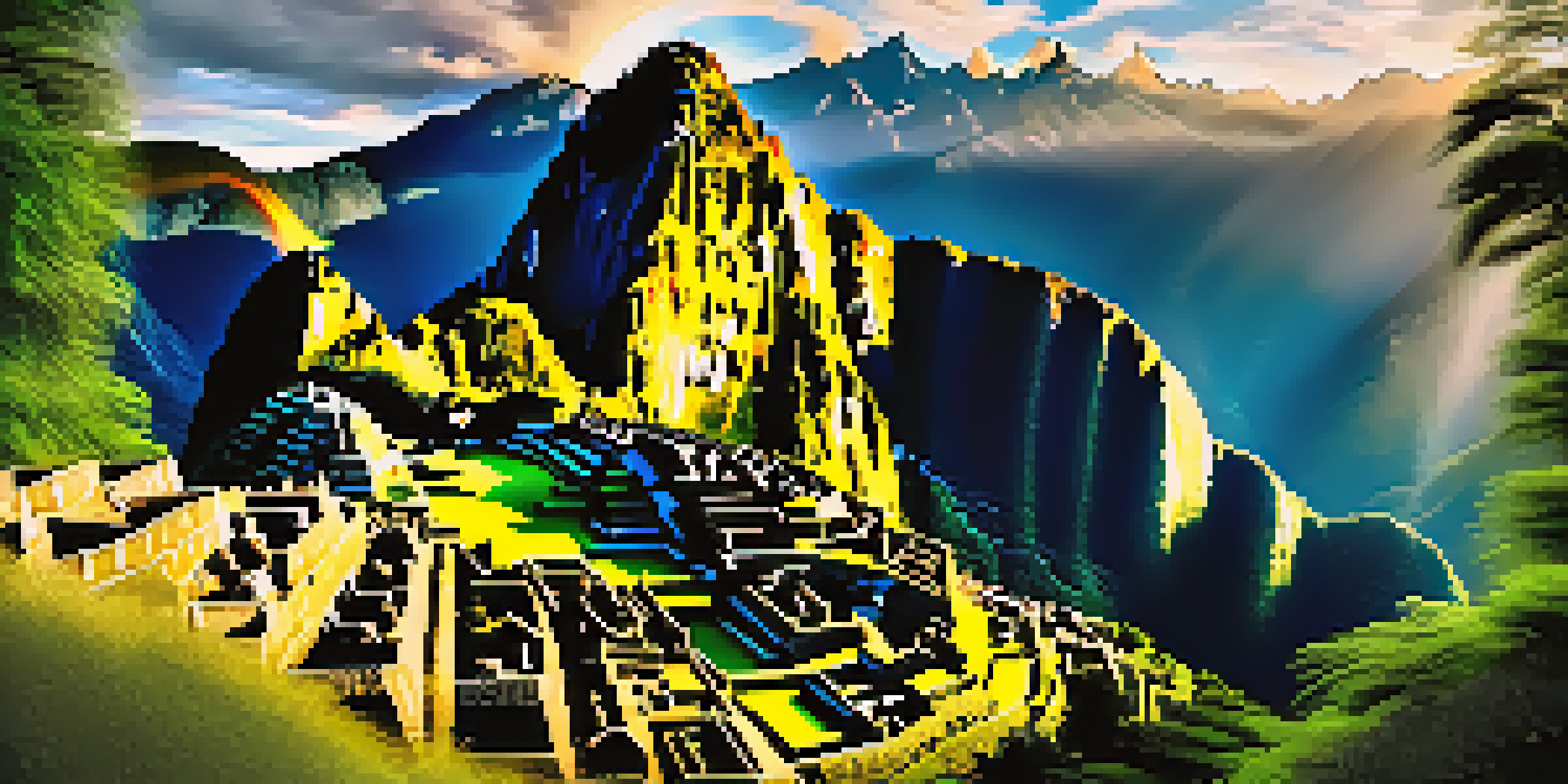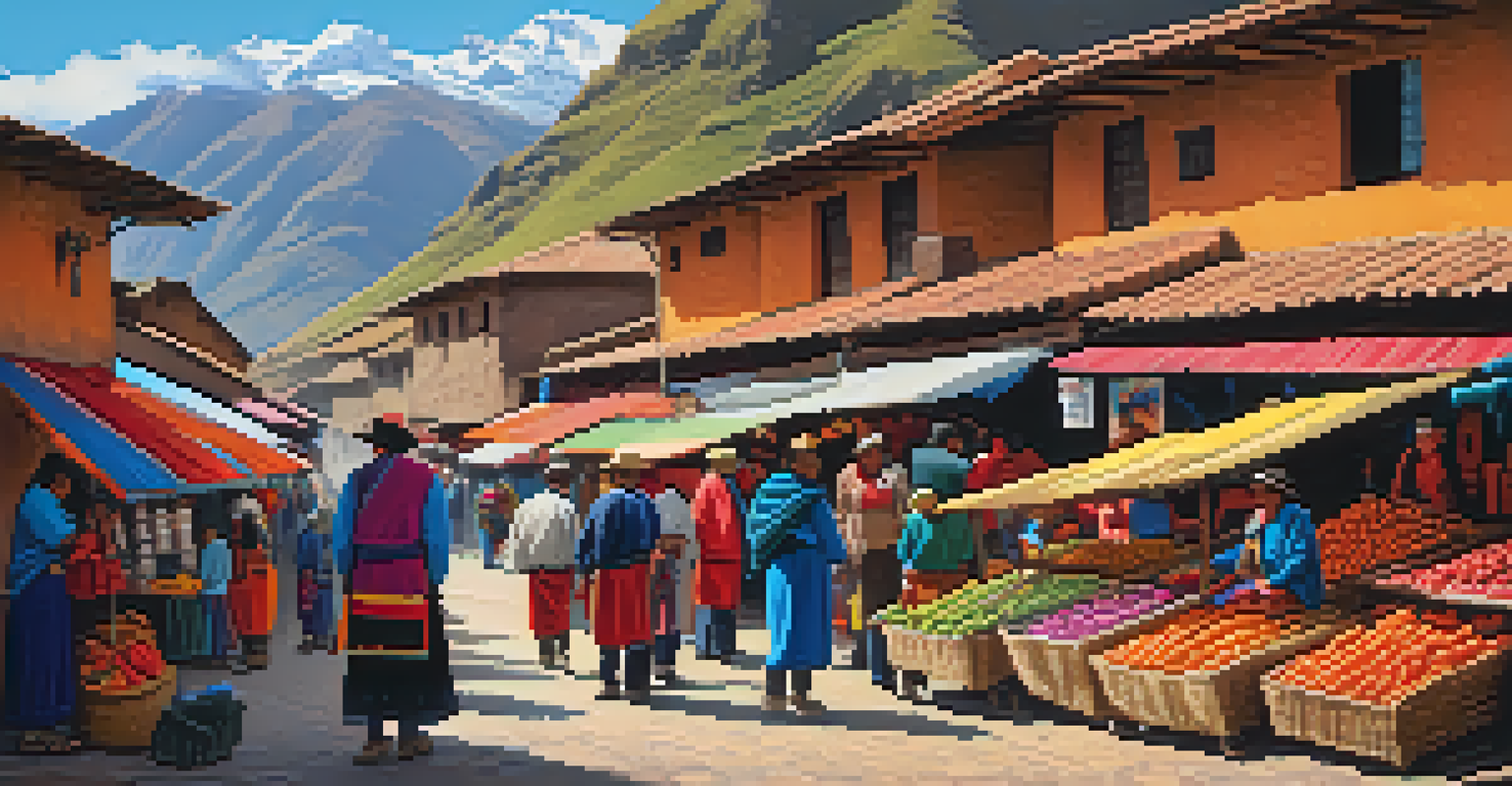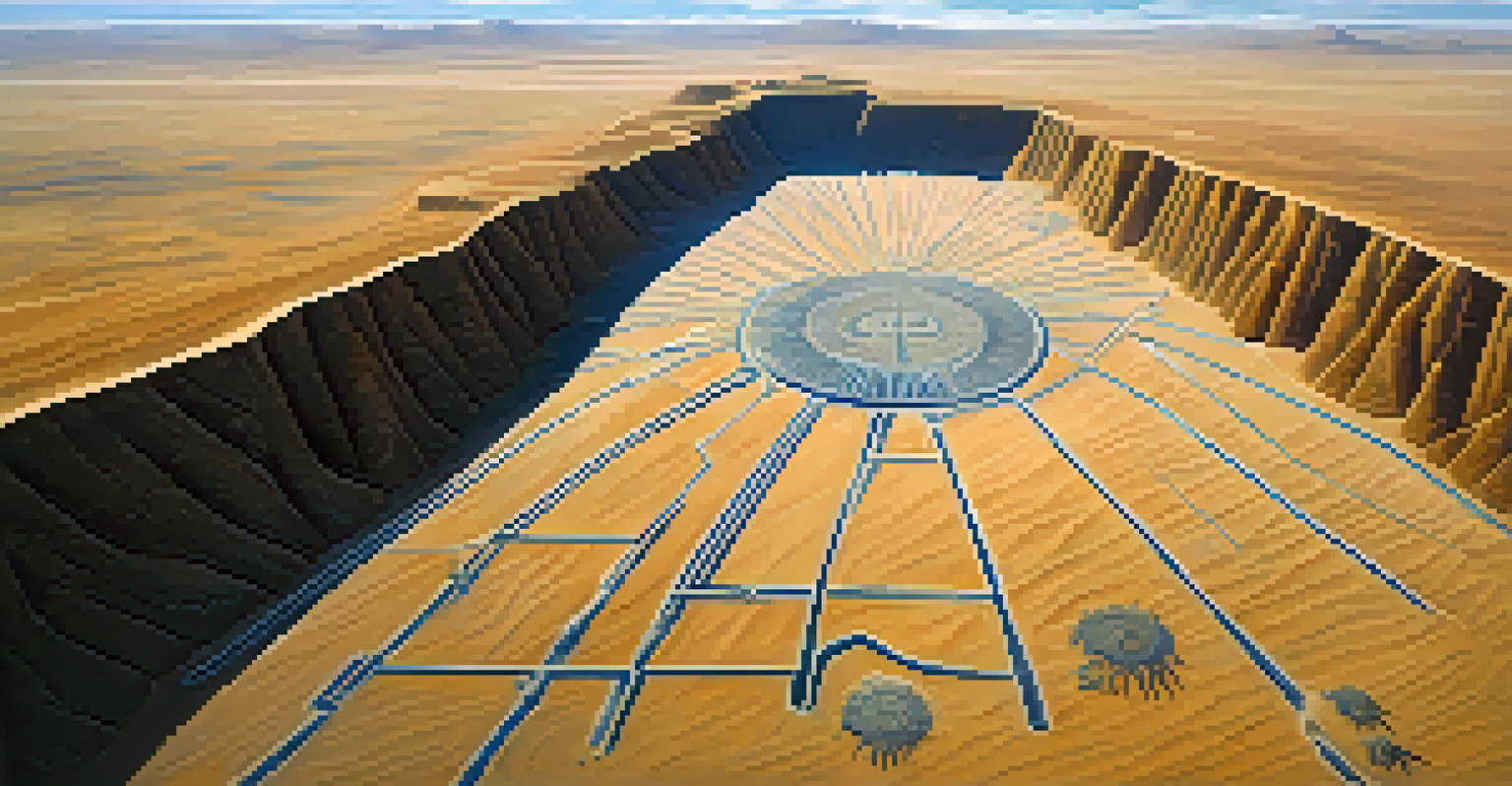Exploring the Sacred Sites of Peru: Spiritual Heritage Revealed

The Spiritual Landscape of Peru: An Overview
Peru is a land steeped in spirituality, where the echoes of ancient civilizations resonate through its sacred sites. From the towering Andes to lush valleys, each location tells a story of cultural significance and reverence. The Inca, one of the most prominent civilizations, left behind a rich spiritual legacy that continues to inspire pilgrims and travelers alike.
The journey of a thousand miles begins with one step.
These sacred locations are not merely tourist attractions; they are places where history and spirituality intertwine. Each site offers a unique glimpse into the beliefs and practices of those who once inhabited this vibrant land. Understanding this heritage allows visitors to appreciate the depth of Peru's spiritual landscape.
As we embark on this journey through Peru's sacred sites, we will unveil the mysteries of these locations and the profound connections they hold for both locals and visitors. Get ready to explore the sacred and the sublime, where every stone and ritual has a story to tell.
Machu Picchu: The Lost City of the Incas
Machu Picchu stands as a testament to the ingenuity and spirituality of the Inca civilization. Perched high in the Andes, this iconic site is often referred to as the 'Lost City of the Incas,' and for good reason. Its breathtaking scenery and intricate architecture draw millions of visitors, each seeking a deeper connection with the past.

The site served not just as a royal estate but also as a spiritual sanctuary, where rituals were performed to honor the Andean deities. The Intihuatana stone, often called the 'hitching post of the sun,' exemplifies the Inca's deep relationship with nature and the cosmos. Standing in this sacred space, one can almost feel the energy of centuries of devotion.
Peru's Rich Spiritual Heritage
Peru's sacred sites reveal a deep connection between culture, spirituality, and history that continues to resonate with both locals and visitors.
Visiting Machu Picchu is more than a hike; it's a pilgrimage to a place where the spiritual and natural worlds converge. As you wander through the ruins, you'll discover the stories etched in stone, reminding us of the rich spiritual heritage that continues to thrive in Peru.
Sacred Valley: A Hub of Spirituality
The Sacred Valley, nestled between the Andes mountains, is a vibrant tapestry of culture and spirituality. This area, once the heart of the Inca Empire, is dotted with ancient ruins, traditional villages, and lush landscapes that are deeply meaningful to the local communities. It serves as a living testament to the enduring spiritual practices that have been passed down through generations.
We do not inherit the earth from our ancestors; we borrow it from our children.
In this valley, you'll find important sites such as Ollantaytambo and Pisac, each rich in history and spiritual significance. The terraces of Ollantaytambo showcase the Inca's agricultural prowess, while the Pisac market is a vibrant hub where locals sell handcrafted goods infused with cultural meanings. The interplay of daily life and spirituality is palpable here.
Exploring the Sacred Valley offers visitors a chance to engage with the local traditions and understand the spiritual practices that shape the community. It's an opportunity to connect with the land and its people, fostering a deeper appreciation for Peru's diverse spiritual heritage.
Nazca Lines: A Mystical Geoglyphic Wonder
The Nazca Lines, a series of ancient geoglyphs etched into the desert floor, invite intrigue and speculation about their purpose. Spanning nearly 1,000 square kilometers, these enormous designs depict various animals, plants, and geometric shapes, sparking debates among historians and archaeologists alike. What remains undisputed is their connection to the spiritual beliefs of the Nazca people.
Some theories suggest that these lines served as astronomical calendars or pilgrimage paths leading to sacred sites. Others believe they were offerings to deities, meant to be seen from the sky. Regardless of their purpose, the lines embody the Nazca's deep connection to the spiritual and natural worlds.
Machu Picchu: A Spiritual Journey
Visiting Machu Picchu offers more than breathtaking views; it allows travelers to connect with the ancient spirituality of the Inca civilization.
Visiting the Nazca Lines offers a unique perspective on ancient spirituality, encouraging us to ponder the mysteries of the past. As you fly over these enigmatic figures, you can't help but marvel at the ingenuity of a civilization that sought to communicate with the heavens.
Lake Titicaca: A Sacred Body of Water
Lake Titicaca, the highest navigable lake in the world, holds immense spiritual significance for the Andean people. Its crystal-clear waters are believed to be the birthplace of the sun and the Inca civilization. The lake is dotted with islands, each with its own unique cultural practices and spiritual beliefs, making it a vital part of Peru's spiritual heritage.
Isla del Sol, often referred to as the 'Island of the Sun,' is particularly revered. According to Inca mythology, it is here that the sun god, Inti, sent his children to establish the Inca dynasty. The island is home to ancient temples and sacred rituals that continue to attract pilgrims seeking spiritual renewal.
Visiting Lake Titicaca invites travelers to reflect on the profound connection between water and spirituality. The lake's serene beauty and rich mythology offer a space for contemplation and connection with the natural world, making it a must-visit for those exploring Peru's sacred sites.
Sacsayhuamán: The Fortress of Spiritual Warfare
Sacsayhuamán, an impressive archaeological site located just outside Cusco, showcases the military and spiritual prowess of the Inca. This fortress, built from massive stones fitted together with remarkable precision, served as both a defensive structure and a sacred space. Its name translates to 'satisfied falcon,' symbolizing power and protection.
The site played a crucial role during the Inca Empire, particularly during rituals and ceremonies that honored the deities. The annual Inti Raymi festival, celebrating the winter solstice, is still held here, drawing visitors eager to witness the vibrant traditions that have persisted through time. The lively reenactments bring the past to life, blending history with spirituality.
Pilgrimage as a Spiritual Practice
Pilgrimages to sacred sites in Peru foster community and personal reflection, reinforcing cultural identity and spiritual connections.
Exploring Sacsayhuamán allows visitors to understand the Inca's intricate relationship with warfare and spirituality. The juxtaposition of strength and reverence creates a fascinating narrative, inviting reflection on how these ancient beliefs continue to shape Peru's cultural identity.
The Role of Pilgrimage in Peruvian Spirituality
Pilgrimage has long been a vital aspect of Peruvian spirituality, connecting individuals to their ancestors and sacred sites. Each year, thousands embark on journeys to places like Machu Picchu, Lake Titicaca, and other revered locations, seeking spiritual enlightenment and a deeper understanding of their heritage. These journeys often involve rituals, offerings, and moments of reflection.
For many, the act of pilgrimage is a way to honor their culture and reinforce their identity. It creates a sense of community among pilgrims who share similar beliefs and experiences. The journey itself becomes a transformative experience, allowing individuals to reconnect with their spirituality and the natural world.

As we explore the sacred sites of Peru, it's essential to recognize the significance of pilgrimage in this rich tapestry of spirituality. These journeys remind us that the path to spiritual understanding is as important as the destinations we seek.
Concluding Thoughts: Embracing Peru's Spiritual Heritage
Exploring the sacred sites of Peru offers a profound insight into the spiritual heritage that has shaped this remarkable country. Each site, from Machu Picchu to the Nazca Lines, reveals stories of faith, connection, and cultural identity that resonate with both locals and visitors. The journey through these sacred spaces invites us to reflect on our own spiritual beliefs and connections to the world around us.
As we embrace the rich traditions and practices of Peruvian spirituality, we also open ourselves to new perspectives and experiences. Engaging with the local communities and their customs fosters a deeper appreciation for the land and its history, creating a meaningful travel experience.
In a world that often feels disconnected, Peru's sacred sites remind us of the importance of spirituality and our connection to the earth. By exploring these remarkable locations, we not only honor the past but also enrich our own spiritual journeys, creating lasting memories that transcend time.